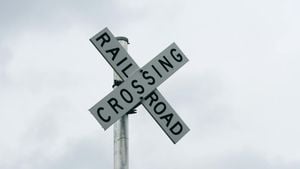Throughout the decades, horror movies have gifted audiences with chilling villains and unforgettable characters, each one more sinister than the last. They’ve shaped the genre, fueled countless nightmares, and provided endless inspiration for Halloween costumes. But what makes these horror movie villains stand out, and why have they become ingrained in pop culture?
Iconic figures like Freddy Krueger, Jason Voorhees, and Michael Myers aren't just names; they represent fears deeply rooted within us. Freddy, with his razor-sharp claws and sadistic sense of humor, haunts dreams, reminding us of the helplessness we often feel when asleep. He’s the quintessential nightmare figure—so terrifying yet oddly compelling. Michael Myers, on the other hand, embodies the fear of the unknown. His mask conceals any semblance of humanity, transforming him from just another murderer to something primal and relentless.
Jason Voorhees, with his infamous hockey mask and machete, is perhaps one of the more tragic villain figures. While initially appearing as the grim reaper of Camp Crystal Lake, he provides commentary on bullying and isolation—foundations for which many horror plots are built. Each villain carries not only their menace but also complex backgrounds, serving as mirrors reflecting societal fears and personal anxieties.
But it’s not just about the scares. Horror movie villains create visceral reactions and often elicit sympathy. Take Pennywise from It, for example. He’s not merely established as the embodiment of fear but also preys on the innocence of children, making his hunt terrifyingly personal. His character raises questions about courage, loss, and the power of friendship—elements frighteningly relatable to many viewers.
Then there’s Dr. Hannibal Lecter, whose sophisticated demeanor and chilling intellect set him apart. Portrayed chillingly by Anthony Hopkins, he combines evil with charm, turning cannibalism and manipulation on its head and transforming horror’s perception of what it means to be “monstrous.” Lecter exemplifies the foundational horror trope of the sophisticated monster, one who operates on the same cerebral level as his victims.
This blend of relatability and terror leads to iconic status. Audiences connect obsessively with horror villains, often developing fandoms similar to those found for traditional protagonists. This paradox raises interesting questions about morality, good versus evil, and whether it’s possible to sympathize with the monster.
Visually, horror villains are memorable. The imagery attached to these characters—Freddy’s claw, Jason’s hockey mask, Michael’s pale mask or Pennywise's red balloon—creates strong mental associations. Merchandise, costumes, and Halloween decorations featuring these elements become annual traditions for many fans.
Today, horror movie villains continue to evolve with changing cultural landscapes. New characters like the demonic entity from The Conjuring films and the terrifying specters from Hereditary highlight modern fears—like the deterioration of family bonds and existential dread. These characters resonate with audiences, tapping deeply held anxieties about life choices, morality, and even inherited trauma.
The resurgence of such characters catches the attention of film enthusiasts and, perhaps more interestingly, the creators who are now more willing to innovate within the horror genre. Recent films have blended genres successfully, so we see horror villains leaning more heavily on psychological themes and existential commentary, rather than relying solely on the capability for violence.
Horror films draw inspiration not only from literature but also from real-world events and climates. By presenting horror through the lens of true storytelling, characters become more realistic, leading to even greater fear. It’s no wonder audiences still line up for slasher films year after year—the thrill of pure horror evokes emotions and reactions like no other genre can.
And whether it’s watching from home or heading to the theater, the spirit of horror is alive and well, driven by characters who both terrify and intrigue. They pull viewers deep down the rabbit hole of fear, forcing reflection on their place within this world. So the next time you settle down for a scary movie night, take a moment to appreciate the chilling villains on screen. They’re not just figments of imagination; they’re reflections of our deepest fears, anxieties, and the very human elements we often try to suppress.



